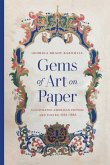Illustrated publications and the role of market forces in shaping representations of Egypt at a time when European colonial interests in the region were at their peak, with 80 color and black and white illustrations In the nineteenth century, following Napoleon Bonaparte's 1798 campaign in Egypt, new possibilities of travel and improvements in printing technology saw an emergence of publishing ventures in France and Britain dedicated to the production of albums and travel accounts featuring images of Muslim Egypt and Islamic architecture and catering to a growing European fascination with the East. Visualizing Egypt analyzes the context and process of production of these highly illustrated publications, from their conceptualization to the finished product and its afterlife, from marketing to the sales of these books, and from circulation to their reception by nineteenth-century audiences. By tracing the long, arduous, and often risky publishing journeys of the makers of these books, including publishers, writers, and artists, such as the Frenchman Émile Prisse d'Avennes, Paulina Banas reveals a complex terrain of changing market demands, collaborations, and conflicting views, and the unsettled authorship of these works, prompting us to think more profoundly about artistic and intellectual exchange in the world of nineteenth-century Orientalist book production. Visualizing Egypt considers nineteenth-century book illustrations on Egypt and the "Orient" not merely as expressions of enduring ideology and colonial propaganda, but as representations shaped by the often-overlooked commercial exigencies of the growing publishing industry and the reckless competition within it.








